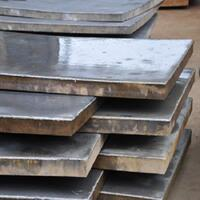Introduction to Water Minimizing Representatives: A Game-Changer in Concrete Modern Technology
Water reducing representatives (WRAs), likewise called plasticizers, are vital chemical admixtures utilized in modern-day concrete formula to enhance workability while reducing water web content. By distributing cement bits better, these representatives make it possible for the manufacturing of high-performance concrete with enhanced mechanical residential or commercial properties, longevity, and sustainability. As building and construction needs advance– requiring stronger, longer-lasting, and environmentally friendly products– water decreasing representatives have actually become main to advancement in civil design and framework advancement.
(Cabr superliasticizer)
Chemistry and Classification of Water Decreasing Representatives
Water minimizing representatives function by adsorbing onto the surface area of concrete bits, creating electrostatic repulsion that avoids load and boosts flowability. They are mainly identified right into 3 generations based on their chemical structure and performance level: lignosulfonates (initial generation), sulfonated melamine formaldehyde (SMF) and naphthalene sulfonate formaldehyde condensates (NSF) (second generation), and polycarboxylate ether (PCE)-based superplasticizers (third generation). Each class supplies unique advantages in terms of dosage performance, slump retention, and compatibility with different concrete types, making them suitable for different building and construction circumstances.
Mechanism of Activity: How Water Reducing Agents Enhance Concrete Efficiency
The main function of a water minimizing representative is to decrease the water-to-cement (w/c) ratio without endangering workability. This decrease causes higher compressive strength, decreased porosity, and enhanced resistance to environmental stresses such as freeze-thaw cycles and chemical strike. WRAs achieve this by changing the rheological habits of the concrete paste, enabling better compaction and denser microstructures. Advanced formulas, especially PCE-based ones, can be customized at the molecular degree to maximize diffusion and hydration kinetics, further boosting early-age and long-lasting concrete homes.
Industrial Applications Throughout Construction Sectors
Water minimizing representatives are vital across a wide range of construction applications. In skyscrapers and bridges, they allow making use of self-compacting concrete (SCC), which moves conveniently right into complicated forms without resonance. In precast and prestressed concrete elements, WRAs add to faster demolding and increased production prices. Facilities tasks such as tunnels, dams, and freeways gain from their ability to improve toughness under extreme problems. Even in environment-friendly building campaigns, WRAs sustain the growth of low-carbon concretes by promoting the incorporation of additional cementitious products like fly ash and slag.
Market Fads and Technological Advancements
The international market for water reducing representatives is proliferating, driven by urbanization, facilities investments, and the need for lasting building and construction remedies. Technical advancements have actually led to the development of hybrid and multifunctional WRAs that incorporate water decrease with retardation, air entrainment, or thickness alteration. Digital tools such as AI-driven admixture optimization and real-time surveillance systems are being incorporated into concrete production to guarantee exact application and consistent quality. In addition, producers are concentrating on improving product stability, minimizing level of sensitivity to differing cement chemistries, and decreasing ecological impact via greener synthesis routes.
Obstacles and Ecological Factors To Consider
In spite of their advantages, water reducing agents deal with difficulties related to cost, compatibility, and ecological footprint. Some conventional WRAs might include hazardous by-products or call for energy-intensive production techniques. Problems such as depression loss over time, level of sensitivity to temperature level variants, and communications with various other admixtures complicate their use in field conditions. From an ecological point of view, there is enhancing pressure to establish biodegradable and non-toxic alternatives. Researchers are discovering bio-based plasticizers stemmed from renewable resources, aiming to minimize dependence on petrochemical feedstocks and straighten with round economy concepts.
Future Potential Customers: Technology and Sustainability in Admixture Advancement
( concrete addtives)
The future of water lowering agents hinges on wise, sustainable, and very engineered services. Developments in nanotechnology and polymer scientific research are enabling the design of next-generation WRAs with superior efficiency characteristics and very little eco-friendly impact. Advancements such as encapsulated launch systems, responsive polymers, and carbon-negative admixtures are being checked out to satisfy progressing construction requirements. Furthermore, the integration of digital systems and IoT-enabled sensing units will certainly permit real-time control of admixture behavior during mixing and curing. As the construction industry moves toward decarbonization and strength, water decreasing agents will play a crucial duty fit the future of concrete modern technology.
Supplier
Cabr-Concrete is a supplier of Concrete Admixture with over 12 years of experience in nano-building energy conservation and nanotechnology development. It accepts payment via Credit Card, T/T, West Union and Paypal. TRUNNANO will ship the goods to customers overseas through FedEx, DHL, by air, or by sea. If you are looking for high quality Concrete Admixture, please feel free to contact us and send an inquiry.
Tags: superplasticizer, water reducer, water reducing agent, concrete additives
All articles and pictures are from the Internet. If there are any copyright issues, please contact us in time to delete.
Inquiry us


